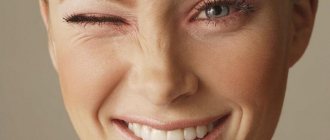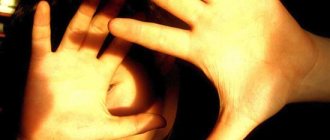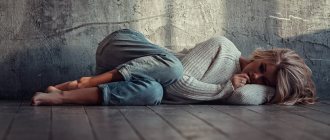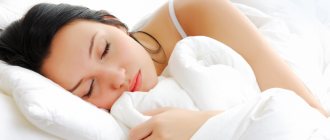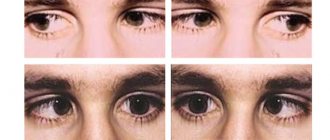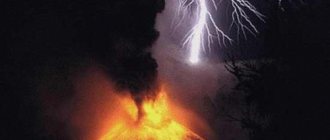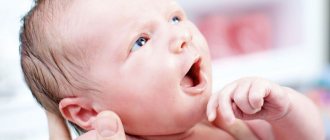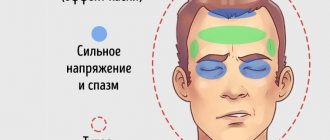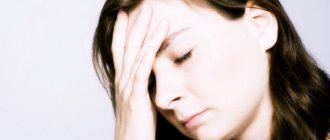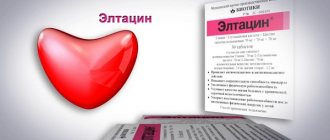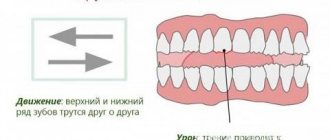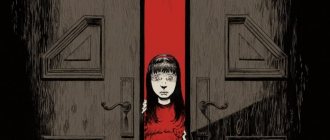Composition and release form
The drug is available in only one form - tablets. Sold without a doctor's prescription. The cost of one package depends on the concentration of the active substance and the number of tablets.
As an active substance, the drug contains fabomotizole in an amount of 5 mg or 10 mg. As excipients, the drug contains potato starch, magnesium stearate, microcrystalline cellulose and lactose monohydrate. Cases of individual intolerance to the active ingredient and excipients are rare, but can be recorded by patients. This medicine is not suitable for people with lactose intolerance.
How long can you take Novo-passit and how does it work?
After a single dose of the drug, a slight sedative effect appears after half an hour to an hour. Taking Novo-passit with food prolongs the period of absorption of active substances in the small intestine; on an empty stomach this process “goes” faster.
The peak effectiveness of the drug action occurs 1.5-3 hours after a single dose . The half-life of active substances, in particular guaifenesin, is 1.5-2 hours. Therefore, 6-8 hours after taking the drug, only a residual sedative effect on the body will be felt. Novo-passit is excreted by the kidneys in the form of inactive compounds during the day.
Indications for use
The instructions for the drug indicate that it can be used as an independent remedy or as part of complex therapy for the following diseases and conditions:
- Anxiety and depressive disorders.
- Anorexia and bulimia.
- Vegetative-vascular dystonia.
- Insomnia.
- Chronic fatigue and stress.
- Increased sweating, dizziness of a psychosomatic nature.
- Decreased concentration, memory impairment.
- The recovery period after nervous shocks.
The drug has a relatively weak anxiolytic effect. This is a moderate sedative that will promote healthy sleep and help overcome life's difficulties and periods of severe stress. "Afobazol" for VSD has also proven itself well. In case of pronounced symptoms, it is permissible to use this drug as part of complex therapy.
Possible side effects when taking
Instructions for use warn of the possible development of the following side effects:
- From the digestive system: diarrhea and bloating in the first weeks of use (rarely observed).
- From the nervous system: headache (rare), in the first days of use, increased depression, weakness and drowsiness are possible.
- From the endocrine system: allergic reactions are possible due to individual intolerance to the main active or auxiliary components.
The effectiveness of Teraligen against tremors of the hands and head
The main active ingredient is alimemazine tartrate. The drug belongs to the group of mild antipsychotics. Effective against tremors of the hands and head if the condition appears as a result of psychiatric spectrum disorders. The antipsychotic effect is very mild, so Teraligen is prescribed even to children from seven years of age.
The intake should be carried out incrementally, from small dosages (a quarter of a tablet) and up to two or three tablets per day. Cancellation should also be carried out “ladder”, otherwise the condition will worsen and the tremor may return with double intensity. Teraligen is a strictly prescription drug and should not be taken on its own; there is a high risk of side effects.
Contraindications for use
The instructions for use for Afobazole warn that taking the drug is contraindicated for the following diseases and conditions:
- Chronic renal failure.
- Liver diseases (can only be taken after consultation with your doctor).
- Lactose deficiency.
- During pregnancy and breastfeeding.
- Children's age up to 16 years.
In some cases, the possible benefits of taking the drug outweigh the risk of side effects and harm to health. Self-administration of the drug for serious pathologies of internal organs is prohibited.
Dosage depending on age
When prescribing Glycine for use by children, 3 important conditions must be taken into account:
Dosage for children under 12 months of age
Typically, at this age, children are prescribed amino acids for persistent sleep problems, increased levels of excitability, tearfulness, and excessive anxiety.
According to the instructions, the dosage of Glycine for children under one year is ¼ or ½ of a tablet. It is advisable to knead it until it becomes powdery; you can also dip the pacifier in the powder or put the tablet under the tongue or on the inside of the cheek.
Children under three years old
A child aged 2-3 years should be given 0.5 tablets of Glycine. The tablet can be crushed to a powder or placed whole under the tongue or on the inside of the cheek.
It is not advisable to dilute the powder with water or other liquids. In this state, it loses its effect and its absorption into the bloodstream or lymph decreases.
From three and older
Older children aged 3 years and older can take a whole tablet of Glycine. At the same time, it does not need to be pre-grinded.
Since the amino acid has a sweet taste, children will not have any difficulties taking it. They may mistake the pill for a vitamin or tablet. Therefore, the child will not have any objections if you offer him to suck on the pill.
Symptoms of vegetative-vascular dystonia
Neurologists are still arguing about the appropriateness of this diagnosis and the reasons that provoke its symptoms. Experts argue that this disease is diagnosed only in our country due to the lack of opportunity to clarify the real causes of the patient’s health problems. The main argument in favor of this diagnosis is that VSD in some cases can be successfully treated in sessions with a psychotherapist. Many agree that this is a psychosomatic disease.
Symptoms of vegetative-vascular dystonia:
- Pain in the heart (cardialgia).
- Arrhythmia.
- Respiratory disorders.
- Autonomic disorders.
- Fluctuations in vascular tone.
- Neurosis-like conditions.
The nuances of life for a patient with vegetative-vascular dystonia
A person feels depressed, nothing makes him happy. Forces himself to work with difficulty. A constant feeling of tightness in the chest, heart rhythm disturbances - but cardiology examinations do not reveal anything. Doctors do not make a specific diagnosis. The patient is forced to suffer for long months or even years from his depressed state. As a result, unsuccessful visits to doctors end with a diagnosis of VSD.
As a rule, the condition develops after severe stress. Often patients abuse alcoholic beverages, which further aggravates the symptoms. “Afobazol” helps with VSD, but if the patient does not follow the basic rules of a healthy lifestyle, the treatment will be in vain. Negative reviews about the drug are largely due to this. Patients do not want to take basic steps to stabilize their health, but believe that the drug is ineffective.
Symptoms of a nervous tic
Almost the only symptom of a tic is the twitching of the muscles around the eyes. There is no way to control the tic - the muscle tissue contracts involuntarily, the twitching occurs completely unexpectedly and goes away just as abruptly.
Blepharospasm is not always noticeable to others. In some cases, eye twitching is actually visible from the outside. But sometimes only the person himself feels discomfort from a nervous tic of the eye, while visually his facial expressions do not change.
Manifestations of tics can vary greatly in intensity. In some people, blepharospasm passes relatively easily and is expressed only in trembling of the facial muscles. Other eyes twitch very strongly during an ocular nervous tic. It is characteristic that pain never occurs during spasm of the facial muscles.
"Afobazole" for VSD and alcohol consumption
Special attention should be paid to this point. Ethyl alcohol, which is contained in any alcoholic drink, is a strong depressant and has a destructive effect on the condition of blood vessels. The nervous system also suffers. Even with a single alcohol abuse, tens and hundreds of thousands of neurons die.
Reviews of Afobazole for VSD indicate that alcohol consumption should not be allowed during treatment. The entire accumulated therapeutic effect very quickly goes down the drain. As a result of even one fact of alcohol abuse, the psyche receives a severe blow. If a patient managed to improve his mood and well-being using Afobazole for VSD, then it should be understood that alcohol can destroy the resulting well-being. The optimal solution is to eliminate alcoholic beverages from your life once and for all. Otherwise, the symptoms of VSD will return again and again, and the therapeutic effect of the drugs will become less pronounced.
Over the past two decades, the problems of urinary disorders in children remain one of the most pressing for pediatric urology. In recent years, pediatricians' awareness of urinary disorders and methods for diagnosing these diseases has improved, which explains the increase in the frequency of their detection.Among all urinary disorders in children, bladder overactivity or urgency occupies a significant place.
The term “overactive bladder” (OAB) was recommended for widespread use in clinical practice by the International Continence Society (ICS) in 2002.
OAB is a specific syndrome characterized by bladder dysfunction, clinically manifested by pollakiuria (more than 8 voidions per day), urgency, urgency urinary incontinence and enuresis. It should be noted that a key symptom of OAB is urgency, defined by ICS as a sudden, urgent desire to empty the bladder that is difficult or impossible to defer. While urinary incontinence or enuresis are possible but not obligatory symptoms. Therefore, it must be emphasized that the concept of OAB is not synonymous with urinary incontinence or enuresis. In accordance with the recommendations of the Terminology Standardization Committee of the International Continence Society (ICS), the diagnosis of OAB is established in the proven absence of infection and (or) other obvious pathological conditions causing the symptoms listed above.
Overactive bladder is a clinical syndrome that determines the patient's social maladaptation, affecting the social, physical, emotional and family spheres of the patient's life. The presence of OAB in a patient means a decrease in social and limited physical activity, a decrease in educational productivity, a significant decrease in self-esteem, and frequent conflict situations in the children's team and family. Patients often develop withdrawal and a feeling of fear of losing bladder control. All this leads to a sharp decrease in the quality of life of the child, as well as his family members. In addition to psychosocial problems, children with OAB are at high risk of developing recurrent urinary tract infections, and increased pressure in the bladder often leads to vesicoureteral reflux and reflux nephropathy.
As a result of our research, among children attending preschool institutions and schoolchildren in the Oktyabrsky district of Omsk, the level of urinary disorders in children 4-7 years old is about 38%, among children 12-15 years old - about 17%. In more than half of children, OAB occurs in a mild form and is not a cause for concern for parents. This is evidenced by the fact that of the identified children with complaints, only about 8% went to a doctor (pediatrician, neurologist, urologist, etc.). According to our observations, OAB is somewhat more common in boys. The complete syndrome, including pollakiuria, urgency, urgency urinary incontinence and enuresis, is observed relatively rarely - no more than 5-6% of patients.
Currently, the genesis of this type of urination disorder is a violation of the autonomic regulation of the nervous system. Often these disorders are considered within the framework of psychosomatic disorders, since they usually arise in the absence of organic damage. Features of the early history of children with chronic tachycardia include a high incidence of prematurity and asphyxia during childbirth. Often, along with the main complaints, children present asthenovegetative complaints, the most common of which are fatigue, sleep disturbances, headaches, and poor transport tolerance. The special connection between the vegetative and emotional spheres is noticeably expressed. As a rule, vegetative disorders are primary in this situation, then emotional disorders appear, although it may be the other way around. “Somatosensory enhancement” also plays a significant role in the pathogenesis of overactive bladder – a condition when the patient focuses attention on somatic disorders, as a result of which the subjective perception of physical sensations increases.
The problem of OAB is far from being completely resolved. It lies in the sphere of interests of many disciplines and is mostly related to vegetation. The role of the parasympathetic part of the nervous system is detrusor hypersensitivity to acetylcholine, determined by the works of Vishnevsky E.L. and many other authors. The role of the sympathetic department still needs clarification. Many studies prove that bladder ischemia is associated with this part of the autonomic nervous system in children (Laurent O.B. et al., 1978, 2007; Borisova S.A., 2006; Zabotina E.K. 2006; Kaytmazov M.M. ., 2008; Hockey JS et al., 1996, etc.).
The formation of personality disorders of an anxious nature in patients with OAB, as well as the presence of autonomic dysfunction, dictates the need to use drugs that have a tranquilizing effect.
PURPOSE OF THE STUDY
To evaluate the clinical effectiveness of the anxiolytic drug Adaptol (Olainfarm, Latvia) in children with overactive bladder, in the “outpatient clinic stage” treatment setting.
MATERIALS AND METHODS
We analyzed the features of clinical manifestations and urodynamic parameters depending on the use of the drug Adaptol in the treatment regimen for overactive bladder in 48 children aged 7 to 14 years.
The sex ratio was (1:1.09) 23 girls and 25 boys.
All children were divided into 2 groups, each of which consisted of children of both sexes:
- Control group (22 people) - comparison group, children received sedatives, vitamin therapy, exercise therapy, massage and physiotherapy;
- The test group (26 people) received treatment similar to the control group and additionally adaptol orally, according to age, 0.5-1.0 g/day in three doses, orally, after meals, in courses of 1.5 months.
[td]
In combination with, vitamins of group B, PP, A and E were prescribed in age-specific dosages, sedatives (herbal origin) and physiotherapy, electrophoresis with aspirin on the bladder, magnetic therapy on the bladder, electrophoresis with aminophylline on the collar area, electrophoresis with nicotinic acid on thoracolumbar zone using an extended method, massage of the collar zone, exercise therapy. The course of treatment was 4-5 months.
The choice of this drug was dictated by its ability to penetrate the blood-brain barrier, providing a central: GABA-positive effect, serotonin-positive effect, adrenolytic effect, increases the sensitivity of central M-cholinergic structures, as well as an effect at the tissue level (Antihypoxic effect, membrane stabilizing effect, activation processes of cell energy supply, glucose metabolism and tissue respiration). The presence of such properties in this drug determined its pharmacological effects: anti-anxiety - reduction of anxiety, fear, emotional lability, irritability, obsessions. Vegetostabilizing, somatotropic - improving microcirculation, normalizing the state of psychosomatic disorders, stress-protective - prevention and protection from overload and fatigue, Nootropic - improving memory, attention, mood, antihypoxic.
All children underwent an examination, including clinical tests of urine and blood, bacteriological examination of urine, registration of the rhythm of spontaneous urination, ultrasound examination of the kidneys and bladder with determination of the volume of residual urine, and uroflowmetric monitoring for 1-2 days.
The material for analysis included outpatient records, urination assessment tables, urination diaries, and data from objective research methods.
Exclusion criteria used for selection into the observation group:
- age less than 7 and more than 14 years;
- presence of urinary tract infection
- urinary incontinence due to congenital pathology of the spinal cord and developmental anomalies of the urinary system;
- fistulous forms of urinary incontinence;
- the presence of diseases of the nervous system with pronounced functional disorders of the pelvic organs and musculoskeletal system (neuroinfections, spinal injuries with complications in the form of paraplegia, hemiparesis, etc.);
- mental illness.
The main complaints that patients presented were the following: frequent urination, urgency, pollakiuria, nocturnal and daytime enuresis, sleep disturbances, increased irritability, fatigue. The duration of the disease before seeking medical help varied from 6 months to 5 years.
The assessment of clinical symptoms was carried out using the modified qualimetric table of E.L. Vishnevsky, from which data on leukocyturia and diuresis were excluded.
The survey data is processed using a specially created computer program “KOAM”. As a result of processing, a conclusion is issued about the state of the child’s urination act: the degree of dysfunction of urination was determined by the sum of qualimetric points (moderate - 3-10 units, severe - 11 or more units).
Uroflowmetric monitoring was carried out using a Urocap III urofluorimeter (Labory). Duration of registration is up to 2 days with recording of all indicators recommended by the International Committee for Standardization of Urodynamic Studies.
A week before uroflowmetric monitoring, drugs that affect diuresis and detrusor contractility were excluded.
RESULTS
| Diagram No. 1 |
Treatment evaluation was carried out over time after 8 weeks and after 24 weeks. Such intervals were determined by the duration of treatment courses. Data analysis revealed the following patterns.
In both groups, a decrease in the total qualimetric assessment was noted. The rate of change of this indicator in the first 8 weeks in the test group significantly exceeded the same indicator in the control group, but later in the test group the decrease slowed down somewhat and ultimately the difference was 11.0% (Diagram No. 1).
| Diagram No. 2 |
The effective volume of the bladder increased significantly in both groups, however, in the study group there was a more intense increase in the effective volume throughout the entire observation period and, as a result, the difference with the control group was 17.79% (Diagram No. 2).
Changes in frequency of urination and number of episodes of enuresis were similar in both groups. These indicators decreased uniformly in both groups and the difference between the groups ultimately fell within the statistical error and did not exceed 1.5%.
The average urination rate tended to decrease in both groups, the final difference between the groups was 8.91%.
| Diagram No. 3 |
The most pronounced difference was in the change in the frequency of imperative urges, as illustrated by diagram No. 3. While in the control group this indicator slowly decreased throughout the observation period and eventually reached a reduction level of 34.88%, in the test group there was a sharp decrease in the first 8 weeks, then the rate of decline slowed down somewhat, although it remained very high and by 24 weeks the frequency of imperative urges decreased in this group by 88.46% of the original. The difference between the groups in this indicator at the end of the observation was 53.58%.
All received digital materials were subjected to statistical processing using the “Data Analysis” package of the Excel spreadsheet processor. Table 1 presents the results of statistical data processing.
The total effectiveness of treatment, derived on the basis of all six evaluated parameters, in the group receiving treatment with adaptol was 68.18% and exceeded the effectiveness in the control group by 16.97% (p
During the entire period of using adaptol in children with OAB, we observed a side effect in the form of drowsiness in only one child.
CONCLUSIONS
- The drug Adaptol in patients with urgent urinary incontinence is characterized by a high level of clinical effectiveness, exhibiting pronounced anxiolytic and vegetostabilizing effects.
- Pharmacotherapy with adaptol is characterized by a high safety profile and good tolerability.
- Taking adaptol expands the child's adaptive capabilities by normalizing the somatovegetative, cognitive and emotional components of children's mental activity.
The results obtained may be of practical importance for urologists, since the psychopharmacological properties of adaptol allow us to consider it as an almost “ideal” drug for use at the stages of outpatient treatment as a psychopharmacological agent for the complex treatment of neurogenic urination disorders.
Aleshin I.V., Ph.D. Zaitsev Yu.E. BUZOO "Children's City Clinic No. 5", Omsk
Tell/Share:
The use of Afobazole for shortness of breath and arrhythmia
The main problem of patients diagnosed with VSD is a frequent feeling of lack of air and the associated fear of death. At the same time, a strong heartbeat begins. The patient is afraid for his life, an unaccountable horror begins and attempts to breathe in as much air as possible. This condition is called a panic attack.
Reviews of Afobazole for VSD and other nervous disorders indicate that the drug is quite effective. Relief does not come immediately, but after three to four weeks of regular use. The active substance accumulates in the body, and the patient forgets about breathing problems and palpitations. Afobazole does not help everyone with VSD and panic attacks. But many people were able to forget about this unpleasant condition thanks to the pills.
From the practice of doctors
Many specialists often prescribe this remedy. This is due to the fact that Glycine shows itself only on the positive side, eliminates signs of various disorders in the child’s behavior, and is also absolutely safe for the child’s body.
In addition, choosing the right dosage for your baby is very easy. This is due to the fact that the child’s reaction to the components of the drug can be traced at the very first stage of taking it.
In addition, in their reviews, many children's doctors note the main advantage of the drug - its versatility. Glycine can be used as a sedative, as well as to improve mental performance and stimulate the brain activity of children.
At the same time, a slight adjustment of the daily dosage of the drug allows you to achieve the desired result without changing the medication.
It is worth taking into account that Glycine is a nootropic. This product consists only of amino acids that are produced by human bodies. For this reason, the drug does not affect other systems of the body, and also does not cause addiction or side effects.
Doctor Komarovsky knows how to raise and raise a child without drugs:
The use of Afobazole for insomnia and increased anxiety
The disease is almost always accompanied by sleep disturbances and anxiety, even if there are no objective reasons for it. Does Afobazol help with VSD if the disease is aggravated by insomnia?
Most often you have to use an integrated approach. Afobazol has a cumulative effect and does not help immediately. And to quickly normalize sleep, you can simultaneously use Melaxen or other mild over-the-counter hypnotics.
“Afobazole” for VSD and panic attacks, insomnia, and anxiety is effective only with long-term use. In parallel with this, the patient himself must make efforts to transform the quality of his life. You should devote time to proper rest, eat a healthy and varied diet, and avoid physical fatigue. Adequate sleep is the key to a healthy psyche and nervous system, so in some cases it is necessary to take additional sleeping pills until Afobazol begins to act in full force.
Medicines for hand tremors: list of the most effective
The modern pharmacological market offers many drugs, and without special education it is quite difficult to understand this diversity. Neurology offers the following classification:
- anticonvulsants are used to slow down processes occurring in the nervous system, and also gently reduce the severity of muscle spasms (Hexamidine, Acediprol);
- inhibitors help weaken the transmission of nerve impulses (Neptazan, Pyrazidol);
- tranquilizers and antipsychotic drugs normalize the functioning of the nervous system, block panic attacks and relieve anxiety (Atarax, Teraligen);
- antidepressants help restore the emotional background, allow you to survive difficult life moments without damage to the psyche, and even out the balance of neurotransmitters (Paxil, Fluoxetine);
- nootropics improve cerebral circulation, restore vital activity, increase cognitive abilities, relieve unmotivated anxiety, and stabilize sleep (Phenibut, Pantogam).
How to get rid of hand tremors on your own, without resorting to the use of pharmacology? This is only possible if the tremor is caused by anxiety, stress or alcohol abuse. If there are neurological diseases, then you will have to resort to the help of pharmacological agents in any case.
Reviews on the use of "Afobazol" during exacerbation of the condition
Most often, exacerbations in patients begin in the autumn or spring. Changes in weather have an extremely negative impact on the condition. Knowing this peculiarity, you can start taking Afobazol in advance (without waiting for an exacerbation) for VSD. This will help alleviate anxiety attacks, improve performance and prevent panic attacks.
How long can you take Afobazol for VSD? The average course duration is from one month to three. There is no point in taking a shorter course, since the drug simply will not have time to fully reveal the full spectrum of its action. Patients make a mistake if they stop taking it after being treated for a month. In some cases, the result of treatment appears only by the second month of regular use of the drug.
Medicines for hand tremors: review of drugs and recommendations
Hand tremor is a fine trembling of the fingers and hands. Some people's wrists also shake. The causes of this condition are different: they can be either a psychological state or the presence of various types of physical diseases. Medicine for hand tremors helps relieve shaking and discomfort. However, it is very difficult to choose an effective drug for yourself. First, you need to visit a doctor and make sure what exactly is the cause of hand tremors. Treatment in adults can be not only pharmacological. Doctors often recommend changing your lifestyle for a while - relaxing in a sanatorium, giving up bad habits, quitting a stressful job.
Analogues of "Afobazole" for vascular dystonia
Modern pharmacology offers a fairly extensive selection of drug analogs based on the principle of action on the nervous system and psyche:
- Fluoxetine is an antidepressant from the group of serotonin scavengers that helps improve mood and performance, and normalize sleep. incompatible with some medications. During the course, drinking alcoholic beverages is strictly prohibited.
- "Tenoten" for children and adults is a mild sedative drug from the group of anxiolytics. Normalizes sleep, eliminates anxiety, nervous tics and restlessness. It can be used in parallel with Afobazole, but you will first need to obtain a prescription for the drug from your doctor (neurologist or psychiatrist).
- "Pantogam" is a nootropic that is used in the treatment of anxiety and cognitive disorders in children and adults. Increases performance and mental endurance. improves memory and metabolic processes in the cerebral cortex.
- Phenibut is a mild tranquilizer that is sold by prescription only. It has a moderate activating effect, normalizes sleep, eliminates anxiety and mood swings. Can be used in parallel with Afobazol for VSD.
Clinical picture of Novo-passit overdose
Drug poisoning is manifested by the following symptoms:
- depression of the central nervous system (CNS) and decreased psychomotor reactions;
- drowsiness;
- instability, worsening mood;
- depression;
- lethargy;
- dyspeptic symptoms: nausea, vomiting;
- pain and heaviness in the stomach;
- discomfort in the right hypochondrium;
- bitterness in the mouth;
- respiratory depression;
- dilated pupils;
- muscle weakness, lethargy, complete loss of motor function (if the patient previously suffered from myasthenia gravis);
- tremor (shaking) of the limbs;
- decreased heart rate (bradycardia);
- decrease in blood pressure.
The outcome of an overdose depends on the severity of the victim’s condition, the speed and quality of first aid. In the most severe cases, death.
The lethal dose of Novopassit has not been precisely established, but it is assumed that three times the recommended volume can provoke very negative consequences.

